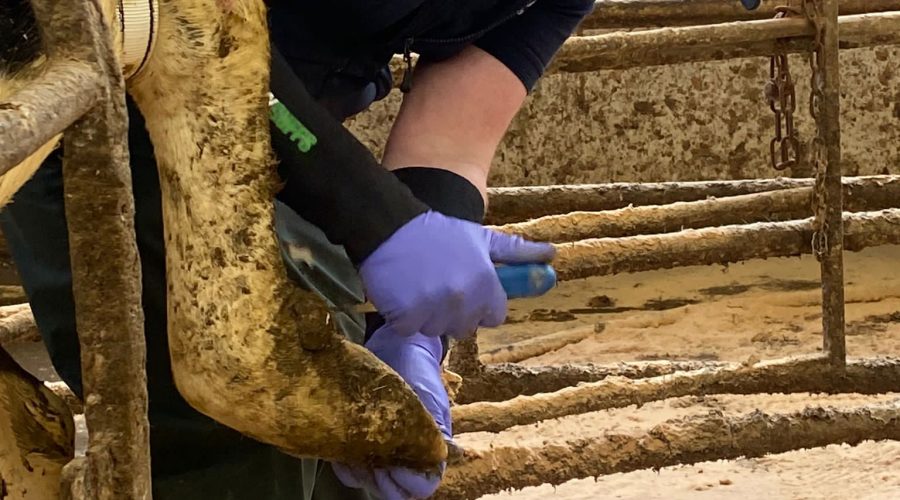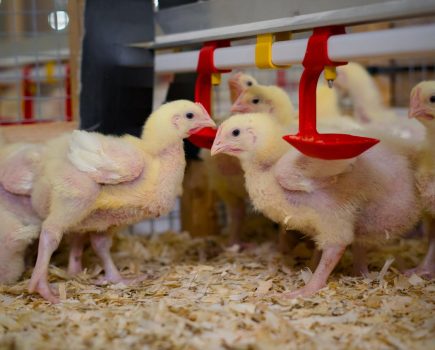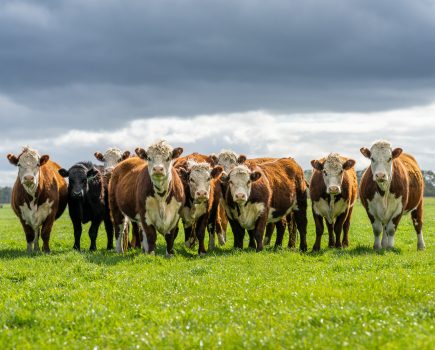A new study has identified the benefits of using NSAIDs routinely in heifers at first and subsequent calvings and, in conjunction with conventional best practice of a therapeutic trim and a hoof block, every time a dairy heifer is identified as lame.
Mobility challenges are one of the most significant problems facing the dairy industry worldwide, having a major impact on cattle welfare, health and production, leading to substantial economic losses. Within the UK, the mean herd lameness prevalence was recently found to be 30.1%. Claw horn lesions (CHL) are one of the most common causes of mobility issues in dairy cows and recent veterinary advances have identified the role of inflammation in the cause and development of diseases of the foot.
During the study, 528 dairy heifers were recruited for a 34-month trial to investigate the effects of routine treatment with a NSAID at calving and during treatment for lameness, on the future probability of lameness and culling. The cows were exposed to normal farm conditions and were split into four groups:
Group 1 – cows received a therapeutic trim and a hoof block on the sound claw (if deemed necessary) every time they were treated for lameness
Group 2 – animals received the same treatment as group 1, with the addition of a 3-day course of a NSAID (single dose daily) every time they were treated for lameness
Group 3 – cows received the same treatment as group 2, with the addition of a 3-day course of a NSAID (single dose daily) starting 24 to 36 hours after each calving
Group 4 – animals received a 3-day course of a NSAID (single dose daily) every time they were identified as lame.
Cows were monitored for the duration of the study and probability of lameness was assessed by a lameness outcome score collected every 14 days. Data on culling was also extracted from farm records. 438 animals were included in the final analysis which revealed that treating a group of cows following the group three protocol led to an absolute reduction in lameness of approximately 10% and severe lameness of 3%, compared with animals treated in accordance with conventional best practice (group one).
James Wilson BSc(Hons) PhD, foot health consultant and lead researcher on the trial, comments: “It appears that through giving heifers a NSAID at critical time points, we have imparted a substantial, long-lasting benefit to them. When freshly calved heifers enter the herd for the first time, we understand that they are (typically) naïve to lameness and have good hoof health. By utilising NSAIDs strategically, we believe that we have preserved the functionality of the foot, thereby reducing the risk of lameness. This is a highly efficacious, cost-effective means of managing cattle mobility on farm.
David Bacon from Gleadthorpe Grange Farm, Mansfield, Nottinghamshire, whose dairy herd was used in the study, says: “We were really surprised with the outcome of the study, but what surprised us the most was the long term effects on heifers and how administering a 3-day course of a NSAID routinely 24 to 36 hours after calving, and as and when required in conjunction with a therapeutic trim and hoof block, dramatically reduced lameness and increased life expectancy.
“We have now incorporated an early detection and prompt effective treatment protocol into our herd health plan. In addition to a 3-day course of a NSAID (single dose daily) 24 to 36 hours after each calving, we now mobility score our milking cows every two weeks; we carry out therapeutic trims the following day, use hoof testers to identify lesions and use blocks and a NSAID, as and when required. We have also incorporated more routine trims at 60 days for heifers and 90 days and 200 days for all adult cattle, as well as a trim at drying off, which is 42 days pre-calving.”
There is a wide range of NSAIDs available with different properties including duration of action and withdrawal times. In dairy cows, it is advisable to consider using a zero milk-withhold NSAID which is fully licensed to treat lameness in cattle to avoid any need to discard milk, however no NSAID is currently licensed in the UK to treat the pain associated with calving and advice should be sought from a farm vet as to the right choice for individual farms.
For further information on the study visit https://doi.org/10.3168/jds.2021-21329







